Search Forum
Modifying Aftermarket Door Panels
Modifying Aftermarket Door Panels
|
So in the "what have you done" thread, I mentioned that I was going to try to figure out a way to melt aftermarket door panels in order to flatten out the raised part that goes underneath the deluxe interior upholstered trim panels. I had some time to put together some tooling to do it, so I figured I would start a thread to chronicle the process. Since I had to destroy a panel to figure out how to do this, I think everyone should benefit from it.
First I was going to try to heat the plastic to a pliable state, then flatten it with large blocks of steel. I reckoned that I could cut out the center of the raised area on the door panel, then flatten enough of the plastic to make sort of tabs that I could rivet a stiff aluminum backer board to. 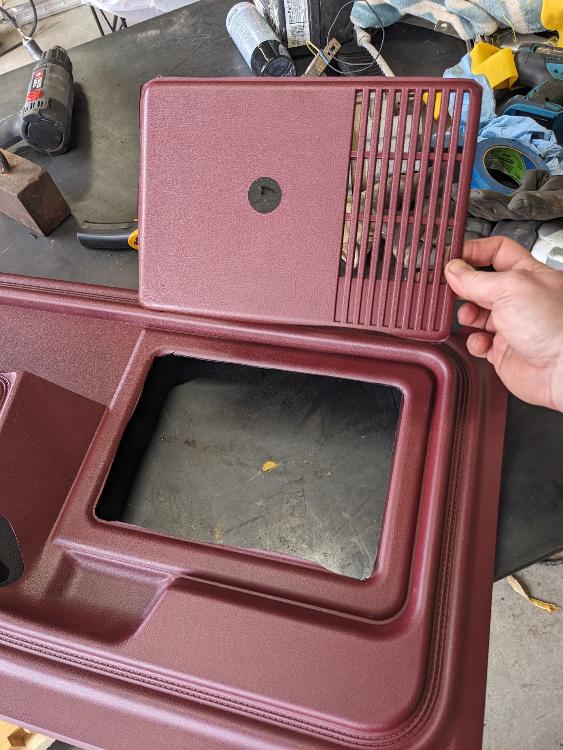 The corner parts proved extremely hard to flatten, so I cut those out too, in order to just leave tabs made of the non-corner parts. 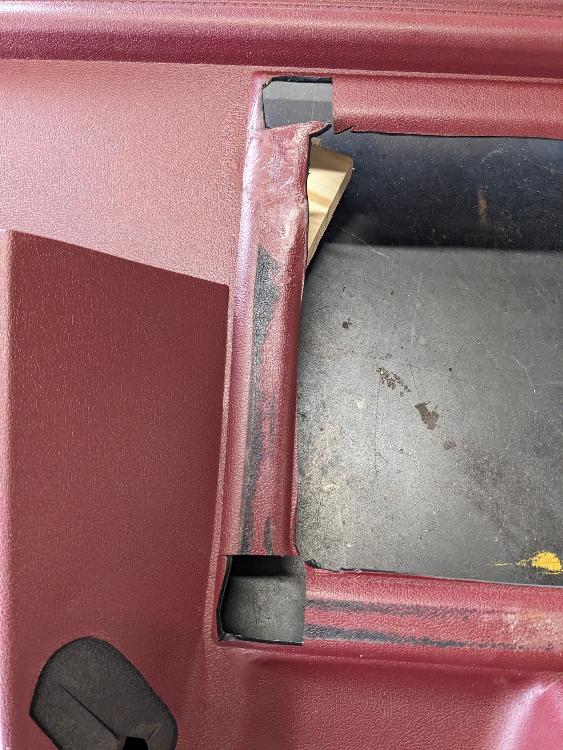 Next, I have tried making two plates of perfect size that would be pulled together by bolts as the plates themselves get heated to the point where the plastic will melt and be formable. Once the plastic is soft, the bolts are tightened and the pressure flattens it. This is where I am now: 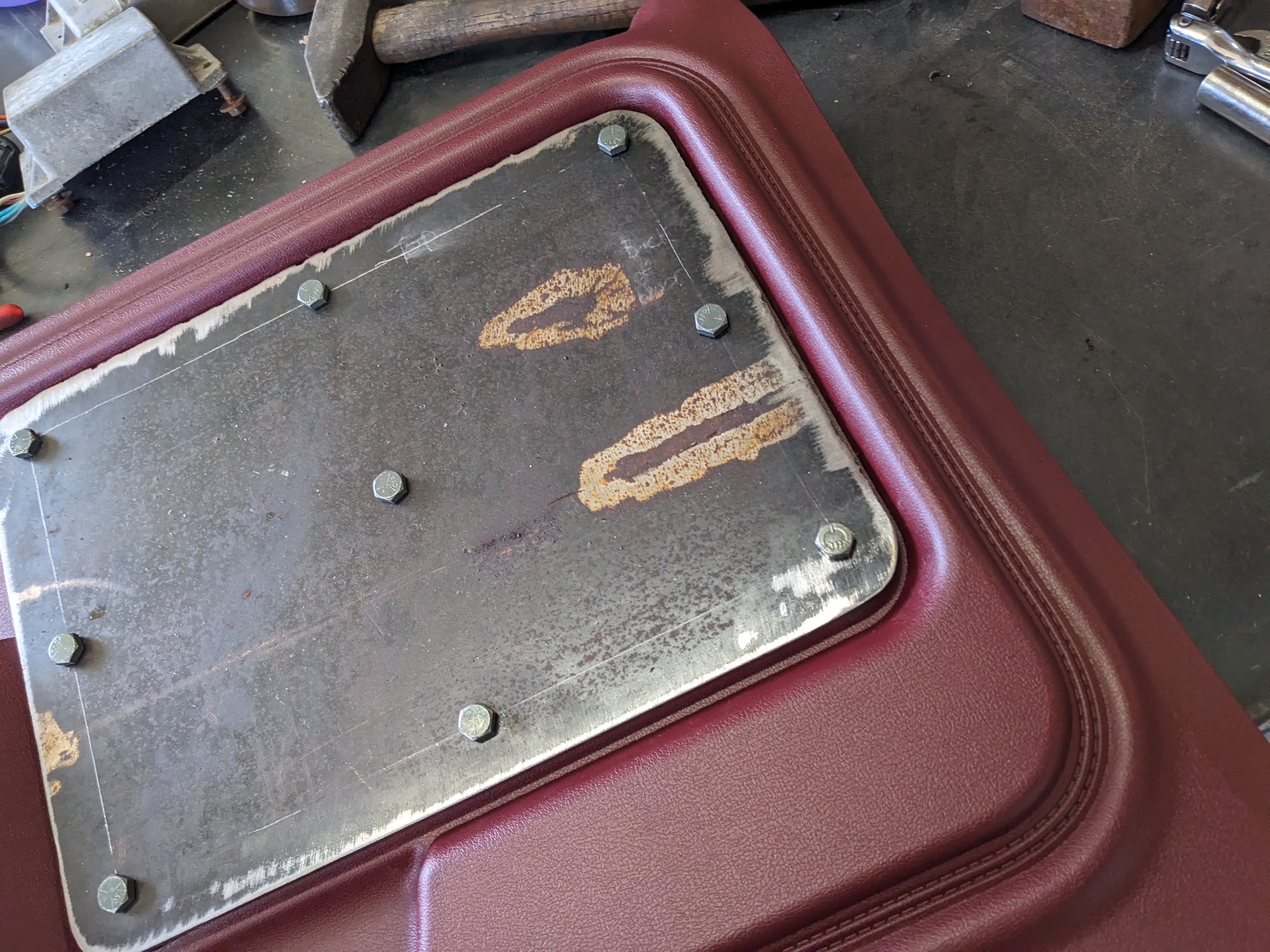 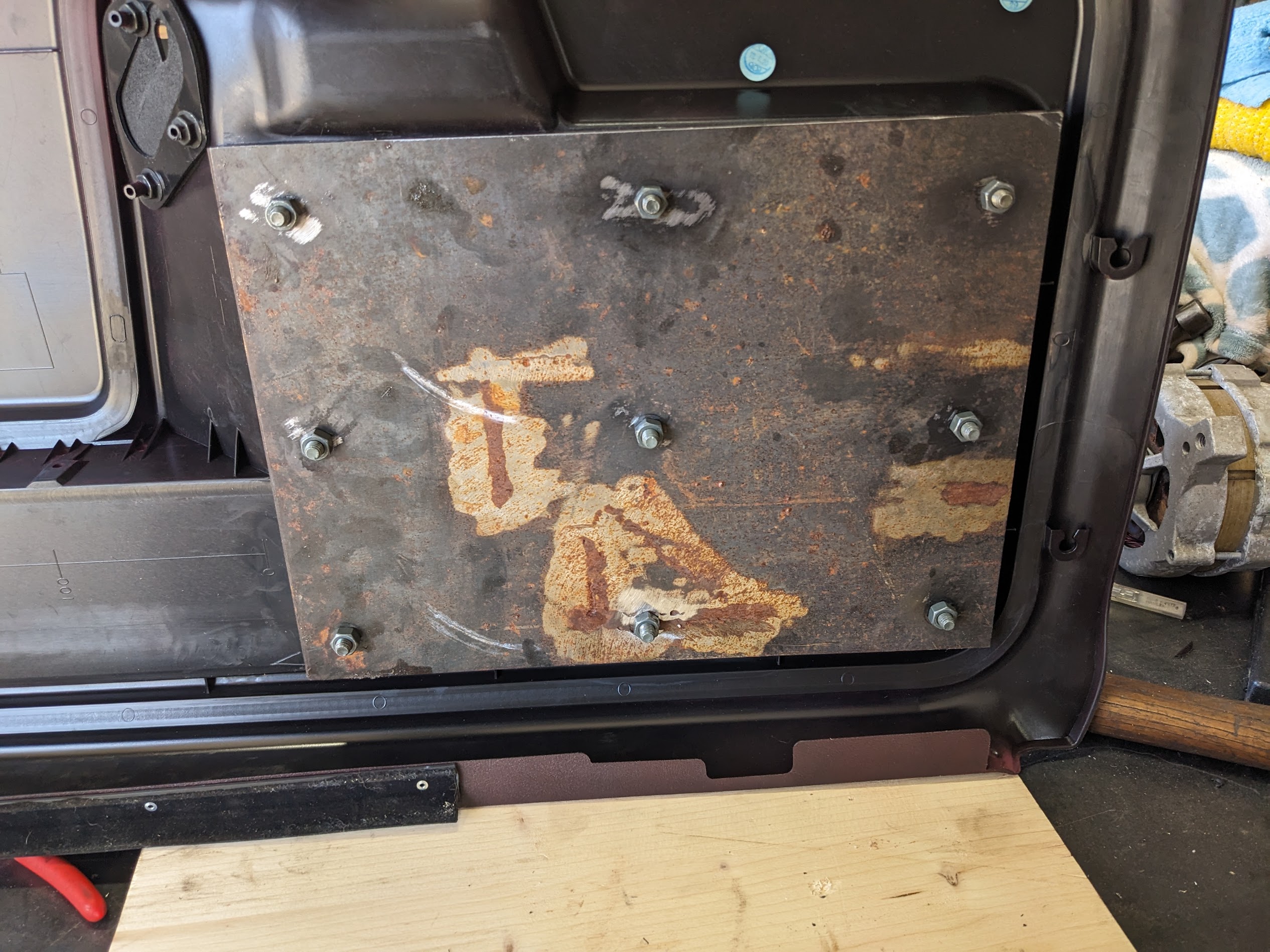 Got too close with the torch for too long.  So, here's what I learned so far: I probably do not need to do any cutting on the panels to do thispreheat the plates AND the plastic before putting everything together. when preheating the plastic, ONLY run your heat gun on the back of the door panel to avoid ruining the finish on parts of the door panel that you don't want to change.It's important that the plate that goes on the visible part of the panel is preheated well. You don't want to have to do too much reheating of that around the parts of the door panel that will end up being visible when you're done. Too much chance of ruining it.Use lock washers next time. The metal has to be preheated around 300-350F and holding a wrench on one side while using a ratchet on the other leaves too much chance to burn yourself.I'll post again when I see the results of The Flattening.
1986 Bronco. 5.0L, Edelbrock Pro-flo 4 EFI, Baumann-controlled 4r70w, 3.55 gears, 31" tires.
|
Re: Modifying Aftermarket Door Panels
|
OK, so it looks like the clamping plates worked! I just removed them and the panel is flattened! I'll be trying this on the other side that I have not modified at all and see how it goes with that one.
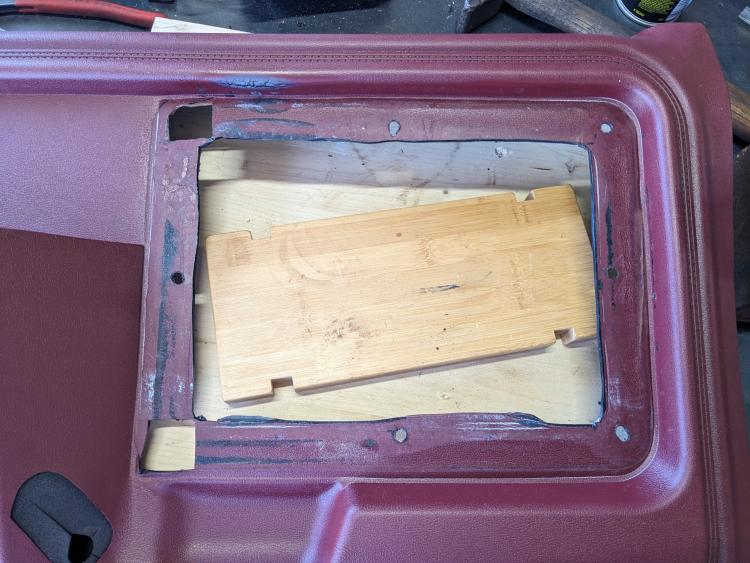 
1986 Bronco. 5.0L, Edelbrock Pro-flo 4 EFI, Baumann-controlled 4r70w, 3.55 gears, 31" tires.
|
Re: Modifying Aftermarket Door Panels
|
Testing on the other panel without cutting was successful. It successfully flattened the panel, though it did seem to warp it a bit. I probably should have kept it hot for a little longer, or maybe drilled the corner out of the raised section to keep it from changing the form of the panel. It's really pretty unnoticeable.
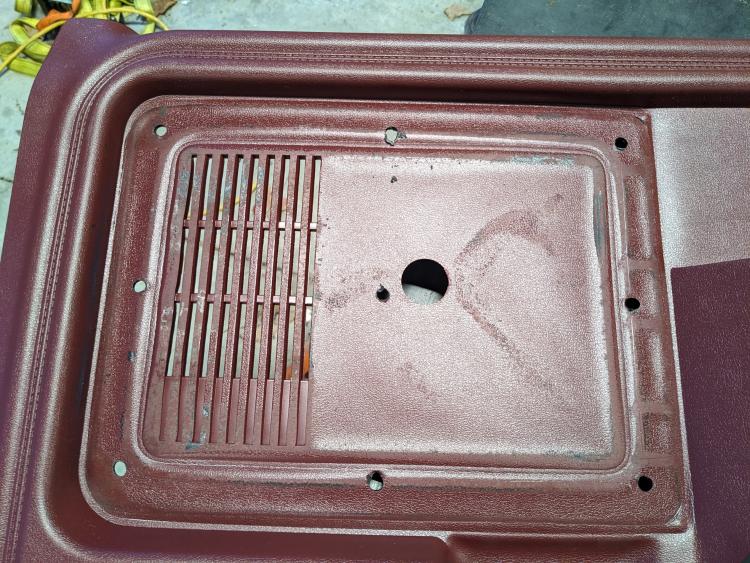
1986 Bronco. 5.0L, Edelbrock Pro-flo 4 EFI, Baumann-controlled 4r70w, 3.55 gears, 31" tires.
|
Re: Modifying Aftermarket Door Panels
|
Administrator
|
Interesting! What temp do you have to get it to in order to soften the plastic?
Gary, AKA "Gary fellow": Profile
Dad's: '81 F150 Ranger XLT 4x4: Down for restomod: Full-roller "stroked 351M" w/Trick Flow heads & intake, EEC-V SEFI/E4OD/3.50 gears w/Kevlar clutches
|
Re: Modifying Aftermarket Door Panels
|
I heated the plastic and plates to 150 as a preheat. Then quickly assembled everything, then heated the metal plates to 300 or so. I'm going to write the whole process on more depth soon.
1986 Bronco. 5.0L, Edelbrock Pro-flo 4 EFI, Baumann-controlled 4r70w, 3.55 gears, 31" tires.
|
Re: Modifying Aftermarket Door Panels
|
Administrator
|
I just picked THIS up.
It's heat formed too!  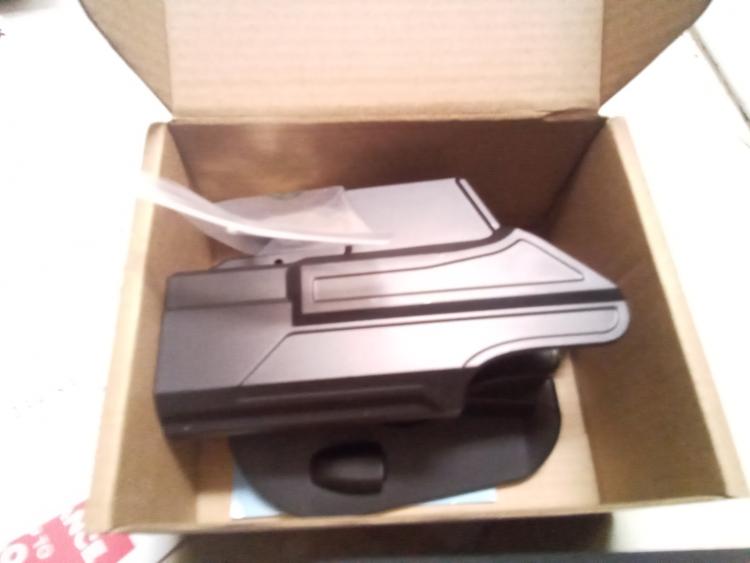
Jim,
Lil'Red is a '87 F250 HD, 4.10's, 1356 4x4, Zf-5, 3G, PMGR, Saginaw PS, desmogged with a Holley 80508 and Performer intake. Too much other stuff to mention. |
Re: Modifying Aftermarket Door Panels
|
Administrator
|
In reply to this post by Gary Lewis
ABS is another product (Royalite ®) produced by Spartech, nee Polycast, where my dad was director of engineering.
The TG is about 105°C (225F) depending on the exact polymer, but it should be serviceable up to 175(F) in any case.
Jim,
Lil'Red is a '87 F250 HD, 4.10's, 1356 4x4, Zf-5, 3G, PMGR, Saginaw PS, desmogged with a Holley 80508 and Performer intake. Too much other stuff to mention. |
Re: Modifying Aftermarket Door Panels
|
<li></li>Nice carry holster!
The temperatures my IR thermometer is showing on the outsides of the metal plates is around 300F. Anything less than that, and tightening the bolts down just warps the panels instead of squishing them. I wonder if the temperatures on the outside of the plates are different from what's inside on the plastic? The process for best results using this method seems to be: Cut the square speaker grille portion out of the new panel. It ends up being too thick and keeps the rest of the panel from being squashed when heatedRemove the "webbing" from the back of the raised portion. This makes the panel easier to flatten.Put the top plate (the one that is on the visible side of the panel) on in the perfect position to cover the raised portion of the panel.Drill guide holes into the panel through the existing holes in the plateTest fit top and bottom plate to ensure all the holes line up wellseparate plates from panel and preheat all to about 150F. As long as you can handle the hot metal with some precision and not accidentally touch it to visible parts of the panel, you can take the metal up a bit more.Set the bottom plate in the correct position, raised up from the table top by something that will not burnPlace the panel on top of the plate, then set the top plate on the raised portion of the panelDrop the bolts through the assembly and put the nuts on the corner oneslift the assembly to vertical and add nuts and tighten all the bolts upUse a porpane torch to heat the top plate to around 300F. I did this by always angling the flame toward the center so it would not go out toward the plastic that I didn't want ruined.Tighten the bolts to take up the slack created by the top plate melting the plasticTurn the assembly over and heat the bottom plate (now on top) to 300F, keep heating and tightening the bolts until you see that the plates have totally flattened the raised portion down.Run your heat gun around the outside edge of the bottom plate to melt a portion of the panel that is just outside the reach of the plates. This will prevent a lot of possible warping of the panelLet it cool and remove the plates.
1986 Bronco. 5.0L, Edelbrock Pro-flo 4 EFI, Baumann-controlled 4r70w, 3.55 gears, 31" tires.
|
Re: Modifying Aftermarket Door Panels
|
Administrator
|
That is just the initial Transition to Glass and definitely internal temperature.
You have to be sure to calibrate the emissivity of your gun depending on the surface. Chrome/mirror and flat black are about the two polar opposite ends of the spectrum we can access. I'm sure the JWST millions of miles out in space with a half dozen heat shields is on another level. Kydex is something between ABS & Polycarbonate. Though I love horsehide it keeps its shape and won't absorb sweat, corroding your piece. I also have a dot, so it needs the channel. I don't know how you'd accomplish that in leather
Jim,
Lil'Red is a '87 F250 HD, 4.10's, 1356 4x4, Zf-5, 3G, PMGR, Saginaw PS, desmogged with a Holley 80508 and Performer intake. Too much other stuff to mention. |
Bullnose Enthusiasts Forum
|
1 view|%1 views
| Edit this page |

